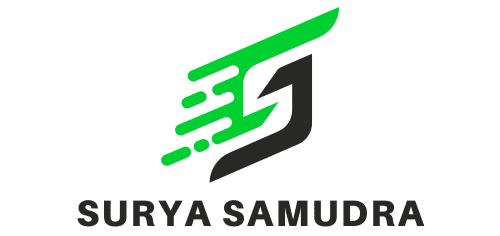What Are the Effects of Progressive Muscle Relaxation on Chronic Tension Headaches?

Migraines and tension headaches can be a debilitating aspect of many people’s lives. They often interfere with daily activities and diminish the quality of life. Pain medications may provide temporary relief, but they are not a long-term solution. As such, interest in alternative and non-pharmacological treatments has grown. One such treatment is Progressive Muscle Relaxation (PMR), a simple relaxation technique that has been shown to reduce muscle tension and stress, potentially providing relief for headaches and migraines. This article explores the impact of PMR on chronic tension headaches.
Understanding Migraines and Tension Headaches
Before delving into the effectiveness of PMR, it’s important to understand what migraines and tension headaches are. Migraines are severe headaches characterized by intense, throbbing pain, usually on one side of the head. They can also be accompanied by symptoms such as nausea, vomiting, and sensitivity to light or sound.
A lire en complément : What Are the Health Benefits of Intermittent Fasting for Women Over 40?
Tension-type headaches, on the other hand, are often described as a constant pressure or tightness around the head. They tend to be less severe than migraines but can be just as persistent and disabling.
Stress is a common trigger for both migraines and tension-type headaches. When the body is stressed, it releases chemicals that can cause blood vessels to constrict and muscles to tense, potentially causing or exacerbating headaches.
A lire en complément : Can Cognitive Training Programs Improve Memory in Individuals with Mild Cognitive Impairment?
Since muscle tension plays a significant role in these headaches, it’s not surprising that a technique designed to ease muscle tension, such as PMR, could be beneficial.
The Basics of Progressive Muscle Relaxation
PMR is a relaxation technique developed by American physician Edmund Jacobson in the early 20th century. The technique is based on the simple premise that relaxing the body’s muscles can lead to decreased stress and improved health.
PMR involves tensing and then relaxing each muscle group in the body, starting from the toes and working your way up to the head. This process allows you to become aware of and control your body’s muscle tension, helping you to manage stress and reduce its physical effects.
The beauty of PMR is its simplicity. It requires no special equipment or training, can be done anywhere, and is accessible to anyone, regardless of age or physical condition. Although it takes some practice to master, many people find it an effective and enjoyable relaxation technique.
Evidence of PMR’s Effectiveness in Treating Chronic Tension Headaches
There’s a growing body of research exploring the potential benefits of PMR for patients with chronic tension headaches. Multiple studies have found evidence that PMR can reduce both the frequency and severity of tension headaches.
In a study published in the journal Headache, for instance, participants who practiced PMR reported a 40% reduction in headache frequency and a 30% reduction in headache severity. In another study, published in the journal Pain, PMR was associated with a significant decrease in the number of headache days per month.
These studies suggest that PMR can be a valuable tool in the treatment of chronic tension headaches, providing a non-pharmacological option for patients seeking relief from their symptoms.
Implementing PMR Techniques for Headache Relief
Incorporating PMR into your routine doesn’t have to be difficult or time-consuming. It can be as simple as devoting 10 to 20 minutes each day to practice the technique.
One way to start is by finding a quiet, comfortable place where you won’t be disturbed. Then, start by focusing on one muscle group at a time. Tense the muscles as tightly as you can for about five seconds, and then slowly release the tension. As you do this, try to focus on the difference between the tension and relaxation. This can help you become more aware of what relaxation feels like and make it easier to achieve in the future.
As with any new skill, it can take some time to get the hang of PMR. But with consistent practice, you may start to notice a reduction in your headache frequency and severity.
While PMR is generally considered safe, it’s always a good idea to talk to your healthcare provider before starting any new health regimen. They can provide guidance and ensure that PMR is an appropriate treatment for your specific needs.
The Future of PMR and Headache Treatment
The use of PMR for the treatment of migraines and tension headaches is a promising area of research. While more studies are needed to fully understand the extent of its benefits and potential uses, current evidence suggests that PMR can be an effective tool in managing chronic tension headaches.
In the era of Google and digital health, access to information about techniques like PMR is easier than ever. This could potentially lead to greater adoption and broader recognition of the benefits of this simple yet effective relaxation technique.
While PMR is not a cure-all, it is a valuable addition to the toolbox of treatments for chronic tension headaches. By reducing muscle tension and stress, PMR can help patients to manage their symptoms and improve their quality of life. It’s an exciting time for those in the field of headache research and for patients seeking effective, non-drug treatments for their pain.
As the world of medicine continues to evolve, it’s clear that techniques like PMR will continue to play an important role in helping people to manage their health and wellbeing.
The Biological Connection: Muscle Relaxation and Headache Relief
Our bodies are complex systems where mental, emotional and physical elements are intricately linked. The stress we experience can manifest as physical symptoms, such as tension type headaches and migraines. It is in this context that progressive muscle relaxation (PMR) comes into play.
According to Mayo Clinic, muscle tension is a common symptom of stress. When we are stressed, our body responds by releasing stress hormones, causing an increase in heart rate and blood pressure, and leading to muscle tension. This is where PMR comes to the rescue.
PMR works by focusing on individual muscle groups, teaching the body how to relax through a two-step process. First, we intentionally apply tension to a muscle group, such as the hands or shoulders, holding it for about five seconds. This is followed by a period of relaxation where the tension is released. Repeating this process across various muscle groups allows us to become more aware of the sensation of relaxation, and ultimately, helps reduce muscle tension.
In the context of headaches, PMR can be a beneficial tool. If stress or muscle tension triggers a headache, learning to relax these muscles may help alleviate the pain or prevent it from occurring. This is particularly significant for migraine patients, who often report muscle tension before or during migraine attacks. By managing this tension, PMR training might decrease the frequency or severity of headaches.
However, it’s worth remembering that while PMR can be effective, it’s not a guaranteed cure. Its effectiveness may vary from person to person, and it’s best used in conjunction with other treatment methods.
Conclusion: A Progressive Step Forward in Migraine Management
Living with chronic tension headaches or migraines can be a challenging journey, often marked by a trial and error approach to find what works best for symptom management. As we continue to navigate the complex landscape of headache relief, tools like PMR present a promising, non-pharmacological approach to managing these conditions.
The simplicity of PMR – requiring no special equipment, minimal time commitment, and the potential to practice anywhere – makes it an accessible tool for many people. Moreover, its focus on mind body connections aligns with a holistic approach to health, placing equal emphasis on psychological and physical wellbeing.
Research evidence suggesting that PMR can reduce both the frequency and severity of headaches provides hope for those seeking non-drug alternatives. Additionally, in an increasingly digital age, the ease of access to information about this relaxation technique could potentially lead to increased adoption and wider recognition of its benefits.
Despite these promising aspects, it’s important to remember that PMR is not a panacea. Its effectiveness may vary from person to person, and it’s best used in combination with other treatments under the guidance of healthcare professionals. Nonetheless, the potential of PMR in managing chronic tension headaches is undeniable.
As we continue to explore and understand the intricacies of our mind-body connections, the future is indeed bright. The integration of techniques like PMR in mainstream medical practice may not be far off. In the meantime, embracing PMR as part of a comprehensive approach to headache management can be a step towards a better quality of life for those living with chronic tension headaches and migraines. As always, remember to consult with a healthcare provider before starting any new health regimen.
